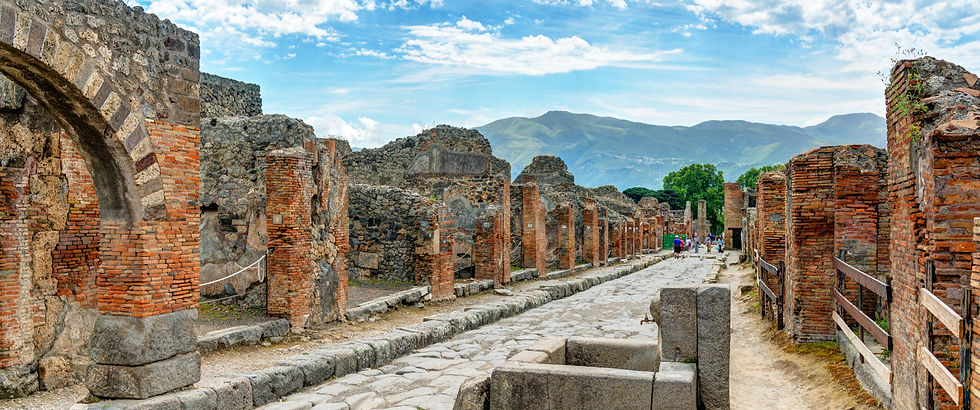THE ETHICS OF OWNING THE PAST
The Ethics of Owning Historical Artwork
The question of who can own the past remains one of the most contentious issues in archaeology and art history today. Museum professionals, academics, legal authorities, law enforcement agencies, and heritage preservation groups worldwide grapple with fundamental questions about cultural property. Where should historical artifacts reside? Who has the right to access our shared human heritage? Should ancient artworks like Pompeii's frescoes be limited to those who can afford private ownership, or do they belong to all humanity?
The Provenance Problem
The concept of provenance, the ownership history of an artwork or artifact, complicates these ethical discussions. While respecting original archaeological context seems straightforward, the reality is far messier. Many historical pieces have complex histories involving theft, colonial appropriation, wartime looting, and black market transactions spanning centuries. Pompeii's treasures, for instance, have been removed, traded, and scattered across private collections and museums worldwide since excavations began in the 18th century.
This creates an ethical paradox. If we insist on returning artifacts to their places of origin, we must acknowledge that many items in prestigious museums were acquired through questionable means. The British Museum's collection, the Metropolitan Museum's ancient art wing, and countless private galleries house objects that were removed from archaeological sites without proper permissions or cultural consent. Yet these same institutions argue they provide global access and scholarly research opportunities that wouldn't exist otherwise.
Access and Inequality
The current system often restricts access to historical artwork based on economic privilege. Private collectors can acquire ancient frescoes, mosaics, and artifacts, removing them from public view entirely. This creates a troubling dynamic where the wealthy control access to cultural heritage while ordinary people can only experience these works through museum displays or reproductions.
For example, a Roman fresco that once decorated a public space in Pompeii, accessible to citizens from all walks of life, might now hang in a private villa, seen only by the collector and their guests. This transformation from public cultural expression to private commodity raises fundamental questions about cultural stewardship and democratic access to history.
The Colonial Legacy
Much of the debate around cultural property stems from colonial-era collecting practices. European and American collectors, often working with imperial backing, removed countless artifacts from archaeological sites like Pompeii but also across Africa, Asia, and the Americas. These objects now form the cores of Western museum collections, while their countries of origin often lack the resources to reclaim or properly display their own cultural heritage.
The same patterns apply to Pompeii and other Mediterranean sites. While Italy has strengthened its cultural protection laws, historical removal of artifacts means significant portions of Pompeii's artistic legacy reside in foreign institutions. This geographic displacement disconnects artworks from their cultural context and the communities whose ancestors created them.
Market Forces and Cultural Heritage
The art market treats historical artifacts as commodities, subject to the same supply and demand forces as contemporary artworks. This commodification creates perverse incentives. High prices for ancient art encourage looting of archaeological sites, as criminals seek to feed collector demand. Even legally acquired pieces become investment vehicles, valued more for their market potential than their cultural significance.
When Pompeii frescoes or similar artifacts enter private collections, they often disappear from scholarly research and public education. Collectors may restrict access, and pieces can remain hidden for generations. This privatization of cultural knowledge impoverishes our collective understanding of history.
The Question of Ownership
So who should legitimately own a 2,000-year-old fresco? The artist is long dead, and the original commissioners have no living descendants. The Roman Empire that created the cultural context no longer exists. Modern Italy has the strongest claim as the successor state, but even this connection involves historical discontinuity. Should ownership default to whoever physically controls the object, regardless of how they acquired it?
These questions become more complex when considering indigenous artifacts and artworks with direct cultural lineages. While Pompeii's inhabitants left no direct descendants to claim their heritage, many archaeological artifacts belong to communities with continuous cultural traditions. The ethical obligations differ significantly between these scenarios.
Technology and New Models
Digital preservation technologies offer potential solutions to some of these ethical dilemmas. High-resolution scanning and virtual reality can provide global access to cultural heritage without requiring physical displacement of artifacts. However, digital access raises its own questions about ownership and control of cultural data.
NFTs and blockchain technologies propose new models for cultural heritage management, but they also introduce commercial elements that many find problematic. Can tokenizing historical artworks democratize access, or does it simply create new forms of cultural commodification?
Preserving the Future
Resolving these ethical dilemmas requires balancing multiple legitimate interests: scholarly research, public education, cultural preservation, and community rights. No single solution will satisfy all stakeholders, but several principles can guide more ethical approaches to cultural heritage.
First, prioritizing public access over private profit ensures that historical artworks serve educational and cultural purposes rather than investment portfolios. Second, involving source communities in decisions about their cultural heritage respects ongoing cultural connections and indigenous rights. Third, supporting in-situ preservation when possible maintains archaeological context and cultural meaning.
Fourth, when artifacts must be moved for preservation or research, creating genuine partnerships between institutions ensures benefits flow to source communities. Finally, using technology to enhance rather than replace physical access can democratize cultural heritage without undermining its integrity.
The ownership of historical artwork like Pompeii's frescoes ultimately reflects broader questions about power, access, and cultural justice. As we develop new technologies and institutional models, we must ensure they serve humanity's shared heritage rather than private interests. The art of the past belongs not to those who can afford to buy it, but to all who can learn from its beauty and meaning.
